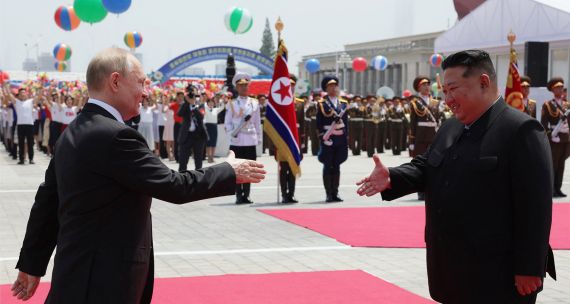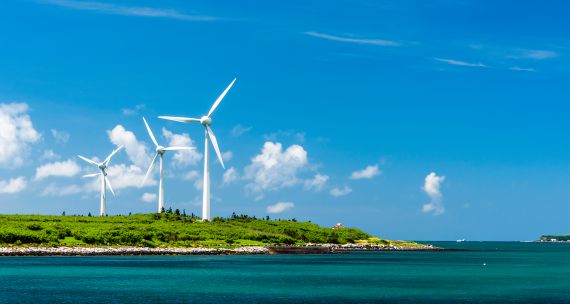China is at the centre of a global clean technology transformation. The world’s largest green-house gas emitter is attempting to reduce its dependence on fossil fuels, in what Chinese President Xi Jinping has termed the “energy revolution.” Beijing has invested heavily in developing one of the world’s largest clean-tech sectors. In particular, its planned US$360 billion investment in renewables by 2020 has been lauded by the international community as a major commitment toward mitigating pollution and addressing climate change. And yet, the uncertain Chinese political and social structure makes it challenging for the country to honour its commitments. This blog in our China Eco-City Tracker web series highlights two important features of clean-tech policy-making in China.
The Central Government: Policy Co-ordination Calls for Administrative Reform
The process for drafting clean-tech policies within the Chinese central government requires unprecedented collaboration among a large number of ministries and cabinet-level departments. The State Council is the overall governing body for clean technologies and it designs, releases, and implements relevant clean-tech policies. Its main responsibility is to ensure strategies and policies developed through its ministries and departments are in line with the principles and guidelines set by the National People’s Congress.
Under State Council leadership, China’s decision-making in renewable energy development involves 15 ministries and departments and government action in energy efficiency and ecological protection depends on nearly 20 government agencies. The Chinese central government clearly maintains a strong role in planning, financing, and policy co-ordination, but the level of effectiveness and efficiency varies significantly among the country’s clean-tech sectors.
In the renewable energy sector, policy co-ordination is concentrated and highly efficient. The National Energy Administration (NEA), a national vice-ministerial ministry under the administration of National Development and Reform Commission (NDRC), is the core of the Chinese regulatory framework for renewable energies.
The NEA has three important functions in renewable energy development: first, it ensures the overall planning of national renewable energy strategies and policies is in line with goals and principles set by top leaders and authorities; second, it promotes timely co-operation with other ministries and departments under the State Council; third, it supervises the implementation of national strategies at local governments and key state-owned enterprises (SOEs).
In the meantime, other ministries and departments have also developed specific roles:
- Ministry of Foreign Affairs and Ministry of Commerce: key decision-makers that determine China’s plan for international cooperation in renewables;
- Ministry of Industry and Information Technology and China Development Bank: implement and support pilot programs in renewables;
- Ministry of Finance, State Administration for Industry and Commerce, and State Administration of Taxation: design and implement taxation and government procurement policies in renewables;
- China Banking Regulatory Commission and Certification and Accreditation Administration: establish investment and technology standards for renewables.
However, in energy efficiency and ecological protection, such policy co-ordination is not meeting the demands of the ambitious national strategy. In fact, the decision-making process in both sectors is fragmented and ineffective. No single government agency is endowed with the same centralized authority as the NEA; nor is there any clear definition specifying the roles of participating ministries and departments under the State Council.
This regulatory framework has delayed the ability of Chinese state actors to promote energy efficiency and ecological protection: Beijing needs to spend extra time and effort to achieve consensus among different government organizations before attempting to implement relevant policies. Due to the infighting, Chinese regulators were delayed two years before beginning 8,000 water clean-up projects.
Even though China has become the world leader in renewable energy production, its achievements in energy efficiency and ecological protection still fail to meet environmental demand. Smart grid technology projects are slower than planned, mainly due to the divergent levels of interest between the NEA and State Grid in inter-connecting regional grids. Success in water and soil remediation is sporadic, reflecting the fact that many cities in the country lack comprehensive urban planning capabilities and experience in policy co-ordination and implementation.
The new ministry will become the most powerful dedicated environmental regulatory body in the history of modern China.The lack of policy co-ordination is raising calls for central government administrative reforms. On March 17, 2018, China formed a new Ministry of Ecological Environment. According to environment minister Li Ganjie, this is a major step to protect the environment and will help prevent the systemic destruction of China’s ecology. The new ministry has sweeping powers to curb pollution. First, it will replace the Ministry of Environmental Protection and take over all responsibilities; second, it will also take over major environmental protection responsibilities currently scattered across various government agencies and ministries.
These include:
- Climate change and emissions reduction policies under NDRC;
- Underground water pollution regulation under Ministry of National Land and Resources;
- Watershed protection under Ministry of Water Resources;
- Agriculture pollution control under the Ministry of Agriculture;
- Marine conservation under the State Oceanic Administration.
This administrative reform will help alleviate policy-making bottlenecks in energy efficiency and ecological protection. The new ministry will become the most powerful dedicated environmental regulatory body in the history of modern China. With its creation, Beijing is likely to expedite policy reforms in ecological conservation and protection which is in line with its global leadership ambitions in green development.
It remains to be seen whether the new institutional arrangement will be granted policy- and decision-making autonomy. Some analysts are pessimistic and believe the new regulatory framework might further marginalize the importance of ecological protection within China’s national strategy. In the new institutional setting, the NDRC, the ultimate administrative and macroeconomic management agency in China, will no longer plan and control ecological protection. The new administration reform may create a new super-ministry in environmental protection. Unfortunately, the issue of ecological environment itself might end up enjoying less attention from top political leaders than in the past.
Central-Local Relations: Strong Policy Coordination
One of the fundamental concerns for Chinese political leaders today is the central government’s perennial struggle to ensure local compliance with national policy. The second distinct feature of the China’s recent clean-tech revolution is that Beijing has established an unprecedented level of policy co-ordination and compliance between central planning and local implementation.
An important policy innovation was to transform the wording in major central government documents. Over the past five years, Chinese regulators have dropped abstract and vague language from national strategies that broadly summarize economic and social development goals. In this clean-tech revolution, specific targets are set for different clean-tech sectors in every province and region, as well as practical timelines for pilot programs.
Simultaneously, the central government has implemented a series of supplementary government policies and regulations to confirm various landing policies that can facilitate the implementation of clean-tech projects. In addition, China has also strengthened the supervisory system in clean technology development. In 2013, Beijing restructured the NEA and vested the administration with institutionalizing supervision and feedback routines from the local government to the central government agency.
The creation of the new, super-ministry of ecological environment this year will significantly help China honour its own commitments for green development.The other regulatory breakthrough is that, rather than delegating power to local governments to design pilot programs, the central government in China has once again centralized the decision-making. China’s 13th national five-year plan and other supplementary government regulations have not only identified specific targets for various sectors in clean-tech industry, but provinces located in different regions are now required to meet certain quotas for the national strategy.
Under some circumstances, provinces are strictly prohibited from developing certain clean technologies and products. For example, Beijing promotes the development of distributed solar power generation, off-shore wind power, biofuels, and nuclear power in the coastal area, but both the northeast and northwest regions are prohibited from developing new wind power plants. In this context, local governments enjoy less policy autonomy and entrepreneurship than before, although this does help to ensure adherence to central policies.
The new clean-tech decision-making regime in China has great implications for Canadian political leaders and clean-tech business communities. First, the creation of the new, super-ministry of ecological environment this year will significantly help China honour its own commitments for green development. Stronger policy, coupled with China’s national ambition, presents huge and stable market opportunities for Canadian clean-tech companies.
Second, the consolidated relationship between central planning and local implementation increases the importance of central-level planning and control. It is therefore imperative for Canadian political leaders to understand recent regulatory changes in China.
To gain a better understanding of the environmental protection performance of China's 31 'Tier 2' cities, visit our China Eco-City Tracker interactive data visualizer.
Also in APF Canada's new China Eco-City Tracker web series:
Click here to download a digital chapbook of the entire series, or read our blogs online, below . .
• China Eco-City Tracker: Web Series Introduction
• China Eco-City Tracker: A Clearing in the 'Airpocalypse' for China
• China Eco-City Tracker: The Upstream Battle for Drinkable Water
• China Eco-City Tracker: Tackling Trash Troubles with New Policies, Penalties
• China Eco-City Tracker: Lessons From the Danes and the Finns
• China Eco-City Tracker: Navigating the ‘Valley of Death’: Financing and Commercializing Canada’s Cleantech Industry
• China Eco-City Tracker: China's Clean Tech Commitment
• China Eco-City Tracker: China's Clean Tech Decision-making




